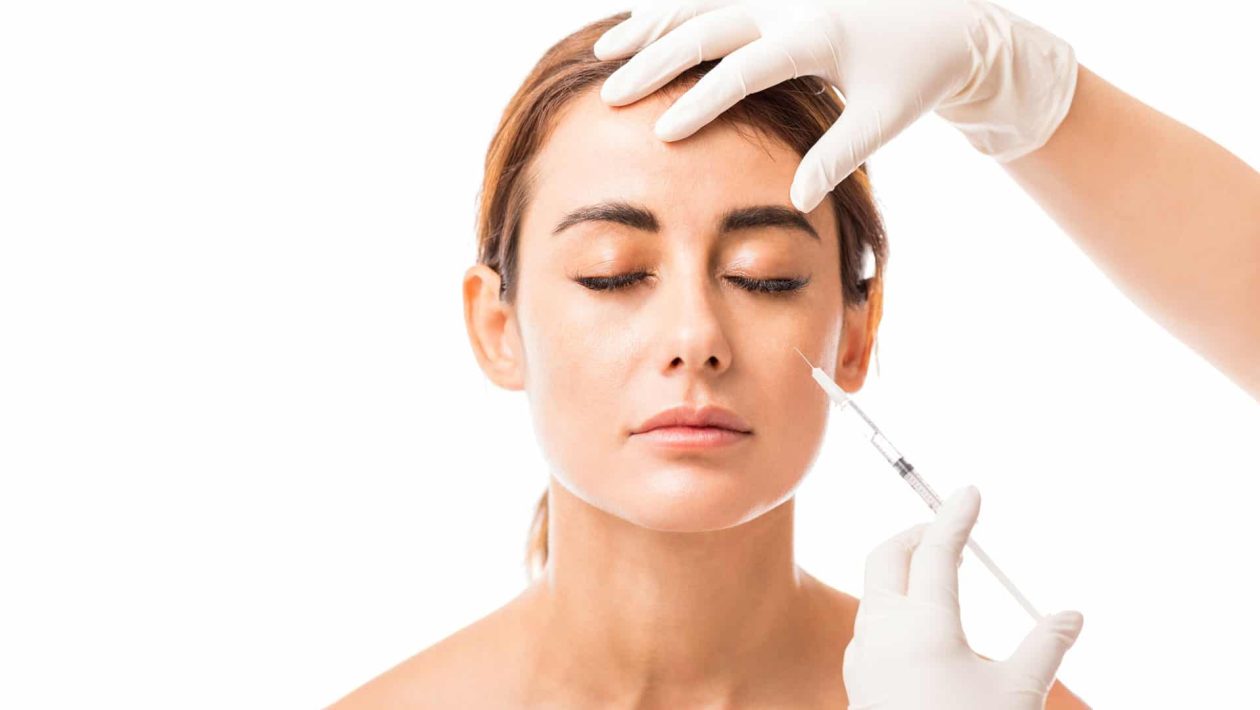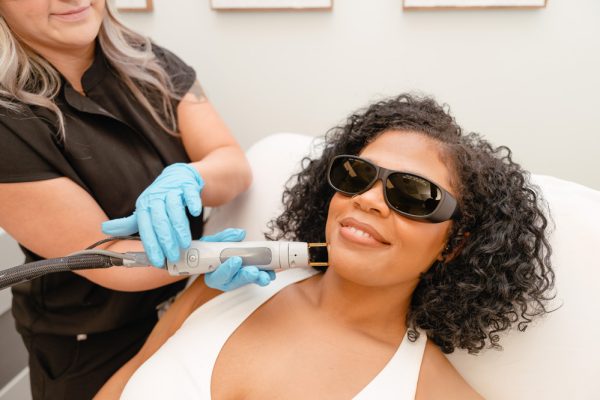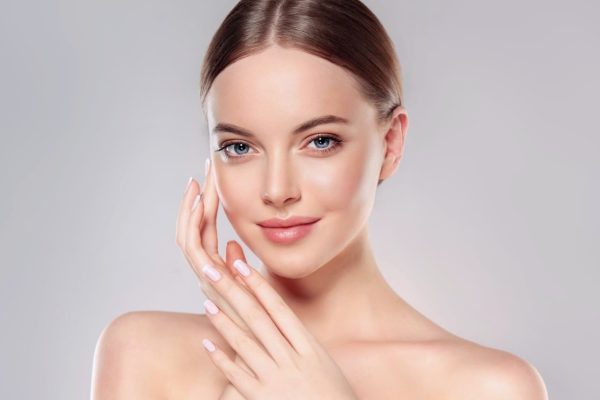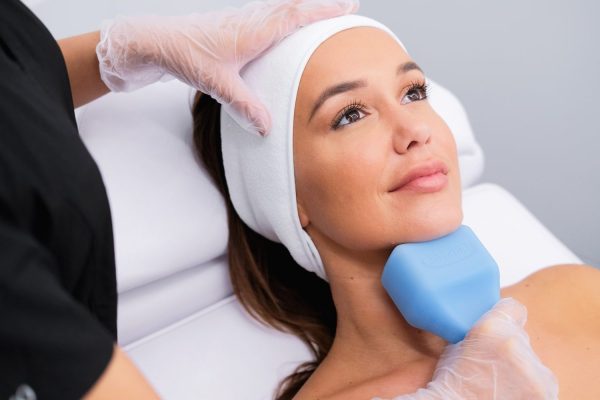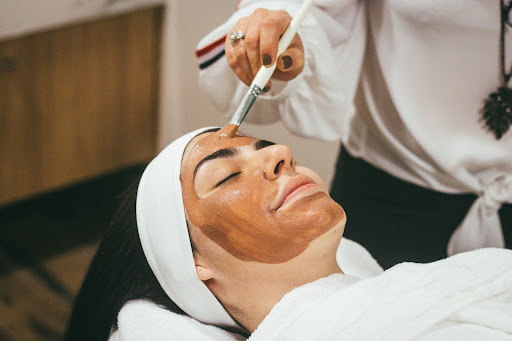Botox is a type of benign neurotoxin that can be injected into the human body to achieve certain aesthetic improvements.
While famed for its cosmetic role in wrinkle reduction, it also possesses a large variety of lesser-known applications. Such uses, while not being common knowledge, can actually help address a variety of medical conditions.
So, in this article, we’ll discuss the unexpected domains where Botox’s benefits extend and underscore the significance of medical advancements in enhancing diverse aspects of human health and well-being.
Migraine Treatment
In recent times, the applications of Botox have extended beyond aesthetics, establishing a significant presence in the field of migraine treatment.
Chronic migraines, marked by frequent and incapacitating headaches often accompanied by sensory disruptions, have posed a complex challenge for medical practitioners.
Yet, the advent of Botox as a viable therapeutic avenue has ushered in a ray of hope for individuals grappling with the ordeal of chronic migraines.
The basis for Botox’s effectiveness in treating migraines centers on its capacity to temporarily induce paralysis or weakening of muscles.
Upon injection at specific locations encompassing the head, neck, and shoulders, botulinum toxin interferes with nerve signals accountable for muscle contraction and discomfort. This outcome manifests as a curtailed intensity and recurrence of migraine episodes.
Although the precise mechanisms remain subject to ongoing exploration, there exists a belief that Botox might also impede the release of particular chemicals integral to pain transmission.
Empirical studies and practical encounters have illuminated Botox’s capacity to furnish alleviation to individuals for whom traditional migraine remedies have yielded insufficient outcomes.
Numerous patients subjected to Botox injections to address migraines have attested to a substantial reduction in the frequency of headache occurrences and an enhancement in their overall life quality.
Spasticity Cure
The utilization of Botox in treating spasticity has emerged as a transformative avenue in medical practice. Spasticity, a condition characterized by involuntary muscle contractions and stiffness, often stems from neurological disorders like cerebral palsy, multiple sclerosis, or stroke.
Botox, known for its muscle-relaxing properties, has shown remarkable efficacy in alleviating the discomfort and limitations associated with spasticity.
The modus operandi of Botox encompasses the restraint of acetylcholine release, a neurotransmitter accountable for muscle contractions.
In the hands of proficient dermatologists, these injections methodically target specific muscles afflicted by spasticity, culminating in a transient enfeeblement or paralysis.
It effectively mitigates muscular rigidity and fosters a heightened range of motion, augmenting patients’ physical functionality and comfort.
A plethora of clinical investigations and practical instances have illuminated Botox’s capacity to significantly ameliorate the ramifications of spasticity. Often, patients undergo augmented mobility, diminished discomfort, and an amplified facility while engaging in daily undertakings.
Nonetheless, the imperative lies in the judicious administration of Botox therapy for spasticity, encompassing precision in selecting the injection site and determining the dosage in adherence to each individual’s unique requisites.
TMJ Dysfunction Treatment
Temporomandibular joint (TMJ) dysfunction, often termed TMJ disorder, is a condition affecting the jaw joint and nearby muscles.
This ailment brings forth diverse symptoms, including jaw discomfort,

sounds like clicks upon mouth movement, constrained mouth opening, and even headaches. In some instances, TMJ dysfunction can significantly impact an individual’s life quality.
An approach to address TMJ dysfunction encompasses the utilization of Botox injections. Administered into the jaw muscles, botulinum toxin can induce muscle relaxation, mitigating their hyperactivity.
This relaxation effectively alleviates the tension and aches connected with TMJ dysfunction, facilitating more comfortable mouth movements.
Consideration of Botox therapy for TMJ dysfunction commonly arises when traditional treatments, such as physical therapy, oral splints, or lifestyle adaptations, fall short.
Expert dermatologists, versed in facial anatomy, administer these injections cautiously to ensure optimal outcomes.
However, it’s important to note that Botox injections as a remedy for TMJ dysfunction do not promise permanence and may necessitate periodic repetition to sustain the sought effects.
While this approach offers solace for numerous individuals, a consultation with a proficient healthcare provider remains imperative to ascertain Botox’s suitability based on unique symptoms and medical history.
Eye Defect Correction
Botox has gained prominence as a versatile tool for addressing diverse eye-related concerns, most notably strabismus, colloquially known as crossed eyes.
Strabismus emerges when ocular alignment falters, disrupting coordination among the eye muscles. This discordance can impair vision and instill self-consciousness.
Botox injections furnish a non-surgical avenue by strategically weakening particular eye muscles, facilitating more effective realignment.
Precision in targeting the hyperactive muscles responsible for the misalignment empowers Botox to reinstate visual harmony, enhancing both binocular vision and comprehensive eye coordination.
Beyond its utilitarian advantages, Botox’s influence on appearance remains remarkable. Strabismus can erode self-esteem due to its conspicuous misalignment.
Rectifying crossed eyes through botulinum toxin injections augments vision and uplifts self-assurance by harmonizing ocular alignment and reinvigorating facial symmetry.
This twofold advantage — ameliorating functional impairment while positively influencing appearance — underscores Botox’s multifaceted role in comprehensive eye well-being.
Nonetheless, acknowledging that Botox for ocular concerns demands meticulous evaluation and administration by adept medical practitioners is imperative. The treatment’s efficacy hinges on meticulous dosage and precision in targeting optimal outcomes.
Hyperhidrosis Prevention
Botox has emerged as a groundbreaking intervention for hyperhidrosis, a condition characterized by perspiration surpassing the body’s thermal regulation requirements.
Predominantly affecting regions like the underarms, palms, and soles of the feet, hyperhidrosis can profoundly impact self-assurance and daily life.
Botox introduces an innovative strategy by hindering the signals that incite sweat glands, effectively minimizing excessive sweat production.
The procedure entails the precise injection of Botox into affected zones, like the armpits, to obstruct the release of acetylcholine — a neurotransmitter pivotal in sweat gland activation.
Consequently, sweat generation is curtailed, affording respite from the unease and humiliation associated with hyperhidrosis.
Botox’s notable attribute in this context is its sustained efficacy. Although outcomes aren’t enduring, the effects endure for numerous months, granting individuals a substantial relief period from undue perspiration.
This non-surgical resolution has notably transformed the lives of myriad individuals who previously grappled with this challenge.
Conclusion
Although primarily known for its cosmetic benefits, the wonders of Botox are not restricted by the fences of aesthetic elevation.
Due to its potency in being able to manipulate different muscles and nerve signals, Botox has emerged as a crafty solution to a variety of other predicaments and stands out due to its varied and surprising uses.

